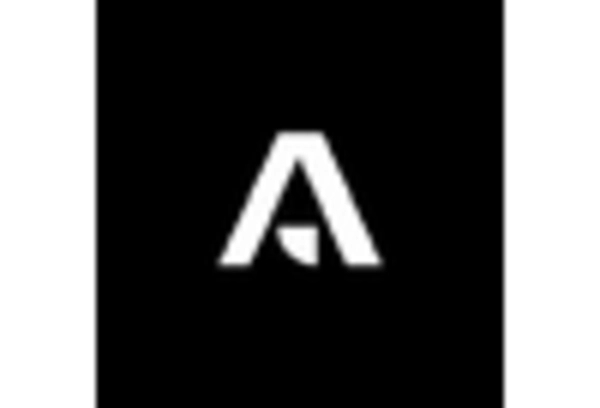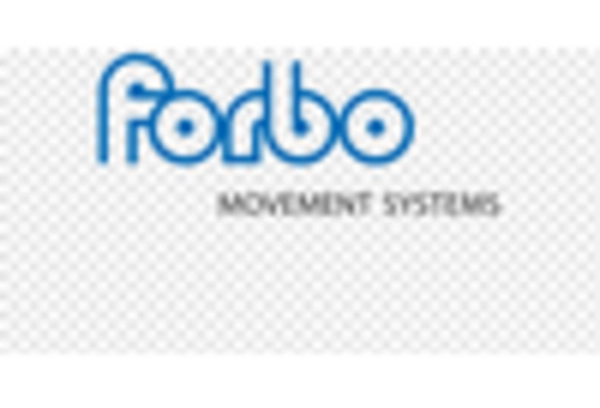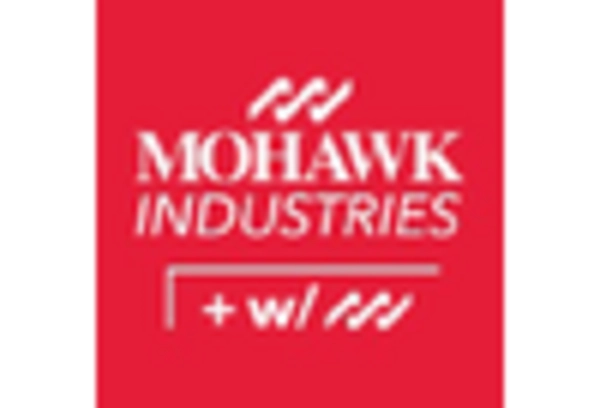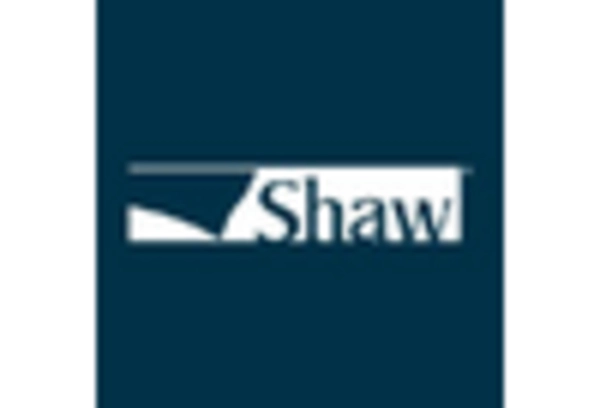Rising Consumer Awareness
The Eco-flooring Market is experiencing a notable surge in consumer awareness regarding environmental issues. As individuals become increasingly informed about the ecological impact of their choices, there is a growing preference for sustainable flooring options. This shift in consumer behavior is reflected in market data, which indicates that sales of eco-friendly flooring products have risen by approximately 20% over the past year. Consumers are actively seeking products that not only enhance aesthetic appeal but also contribute to environmental conservation. This heightened awareness is driving manufacturers to innovate and expand their eco-friendly product lines, thereby fostering growth within the Eco-flooring Market.
Government Incentives and Regulations
The Eco-flooring Market is significantly influenced by government incentives and regulations aimed at promoting sustainability. Various governments are implementing policies that encourage the use of eco-friendly materials in construction and renovation projects. For instance, tax credits and rebates for using sustainable flooring options are becoming more common, which incentivizes both consumers and businesses to opt for eco-friendly solutions. Additionally, regulations mandating the reduction of carbon footprints in building materials are pushing manufacturers to adapt their offerings. This regulatory landscape is likely to bolster the Eco-flooring Market, as compliance with these standards becomes increasingly essential for market participants.
Technological Innovations in Production
Technological advancements are playing a crucial role in shaping the Eco-flooring Market. Innovations in production processes, such as the development of new materials and manufacturing techniques, are enhancing the sustainability of flooring products. For example, the introduction of recycled materials in flooring production has not only reduced waste but also improved the overall quality of eco-friendly options. Market data suggests that companies investing in these technologies are witnessing a competitive edge, as consumers are drawn to products that combine sustainability with durability. This trend indicates a promising future for the Eco-flooring Market, as technology continues to drive improvements in eco-friendly flooring solutions.
Increased Demand for Green Building Practices
The Eco-flooring Market is benefiting from the rising demand for green building practices. As architects and builders increasingly prioritize sustainability in their projects, the need for eco-friendly flooring solutions is becoming more pronounced. This trend is supported by market data indicating that green building certifications, such as LEED, are gaining traction among construction professionals. Consequently, the demand for eco-friendly flooring options is expected to grow, as these materials are often integral to achieving sustainability goals in building projects. This shift towards green building practices is likely to propel the Eco-flooring Market forward, as more stakeholders recognize the importance of environmentally responsible choices.
Consumer Preference for Aesthetic and Sustainable Options
The Eco-flooring Market is witnessing a shift in consumer preferences towards products that are both aesthetically pleasing and sustainable. As design trends evolve, consumers are increasingly seeking flooring solutions that not only meet their environmental values but also enhance the visual appeal of their spaces. Market data indicates that eco-friendly flooring options, such as bamboo and cork, are gaining popularity due to their unique textures and designs. This dual demand for style and sustainability is prompting manufacturers to innovate and diversify their product offerings. As a result, the Eco-flooring Market is likely to experience continued growth, driven by consumers who prioritize both form and function in their flooring choices.


















Leave a Comment